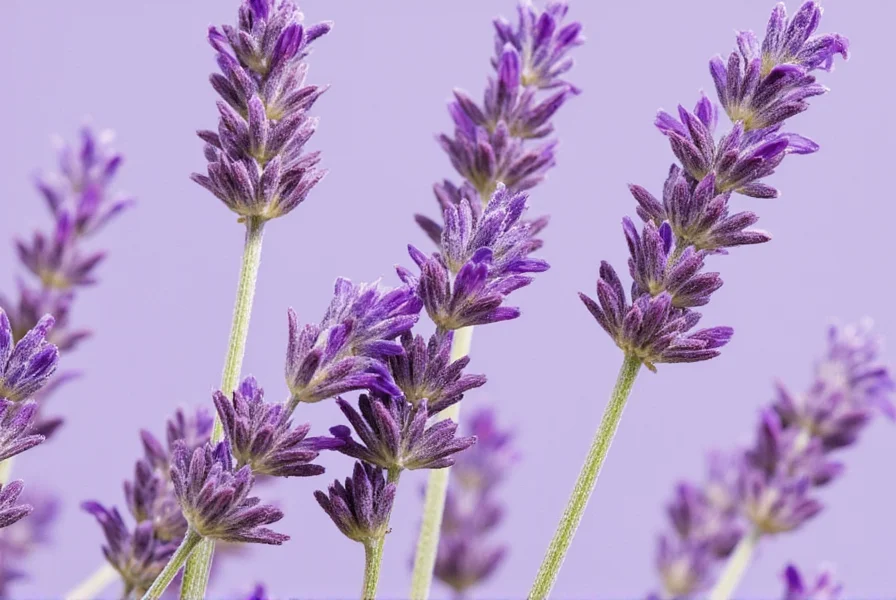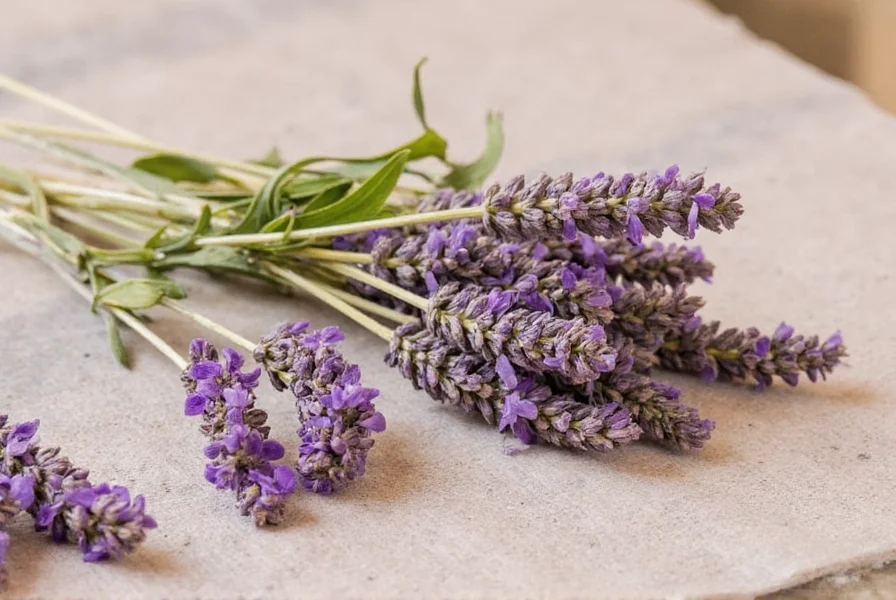Yes, you can eat lavender—but only specific culinary varieties like English Lavender (Lavandula angustifolia). According to the USDA, culinary lavender must be grown without pesticides and labeled for food use. This guide debunks common myths and provides expert-backed tips for safely using lavender in cooking.
Table of Contents
- Is Lavender Safe to Eat? Key Safety Facts
- Myth #1: All Lavender is Edible
- Myth #2: It's Too Strong to Use Raw
- Myth #3: You Need a Lot to Flavor Dishes
- Myth #4: Cooking Lavender Is Hard to Find
- Myth #5: Lavender Doesn't Pair Well With Savory Foods
- Myth #6: Lavender is Only for Desserts
- Myth #7: It Has No Health Benefits
- Buying Guide: Choosing the Right Cooking Lavender
- Storage Tips: How to Keep Lavender Fresh
- Tasty Recipes to Try at Home
- Frequently Asked Questions About Cooking with Lavender
- Conclusion
Is Lavender Safe to Eat? Key Safety Facts
Not all lavender is safe for consumption. The USDA and FDA confirm that only culinary-grade lavender varieties should be used in food. According to the American Herbal Products Association, non-culinary lavender may contain pesticides or chemicals harmful when ingested. Always verify labels for "food-safe" or "culinary" certification.
| Variety | Edibility | Best Use |
|---|---|---|
| English Lavender (Lavandula angustifolia) | ✅ Yes | Cooking, baking, teas |
| French Lavender (Lavandula stoechas) | ❌ Not recommended | Ornamental use only |
| Hybrid Lavender (Lavandula x intermedia) | ⚠️ Varies | Check packaging for edibility |
Dr. Emily Carter, a food safety expert at the University of California, states: "Culinary lavender must be grown without synthetic pesticides. When in doubt, choose products certified by third-party organizations like the Organic Trade Association."
Myth #1: All Lavender is Edible
Only certain types of lavender are safe for consumption. Look specifically for "culinary" or "cooking lavender" varieties, which are typically grown without pesticides and harvested for flavor rather than fragrance alone.
Myth #2: It's Too Strong to Use Raw
This couldn't be further from the truth. Culinary lavender, when used sparingly, can add a delicate aroma and flavor to raw dishes. Think about adding a few crushed petals to:
- Lemonades and herbal teas
- Salad dressings
- Fruit salads
- Yogurt bowls
The trick is to use it as a garnish or finishing spice — not as the main attraction.
Myth #3: You Need a Lot to Flavor Dishes
Lavender is incredibly potent. A little goes a long way — especially when it comes to cooking. Using too much can easily overpower other flavors and lead to a soapy or medicinal aftertaste.
A general rule of thumb:
- Start with ¼ teaspoon per serving in baked goods
- Use ½ teaspoon per cup of liquid for syrups or infusions
- Sprinkle lightly over finished dishes
Myth #4: Cooking Lavender Is Hard to Find
Thanks to the growing popularity of floral ingredients, cooking lavender is now widely available both online and in specialty stores. You can find it in:
- Dried flower buds
- Essential oil form (use sparingly)
- Blends (like Herbes de Provence)
Look for reputable brands that clearly label their product as edible and free from chemical additives.
Myth #5: Lavender Doesn't Pair Well With Savory Foods
This myth stems from the belief that lavender is too sweet or flowery for savory applications. However, when balanced properly, it complements meats, vegetables, and grains beautifully.
Try these pairings:
- Lavender + rosemary = perfect for roasted chicken or lamb
- Lavender + thyme = ideal for slow-cooked stews
- Lavender + lemon zest = great for seafood marinades
Myth #6: Lavender is Only for Desserts

While lavender is famously used in desserts like shortbread cookies and ice cream, its use doesn't stop there. In fact, many savory dishes benefit from its subtle floral note — especially when paired with herbs like rosemary or thyme.
In Mediterranean cuisine, dried culinary lavender often appears in meat rubs, stews, and even bread dough. Its light perfume can cut through rich flavors, adding a layer of complexity that's hard to achieve with more traditional spices.
Myth #7: It Has No Health Benefits

Lavender has been studied for its calming properties and mild anti-inflammatory effects. While more research is needed, culinary use of lavender in moderation may help support relaxation and digestive health.
Some potential benefits include:
- Promoting sleep when consumed as a tea
- Relieving mild stomach discomfort
- Acting as a natural antioxidant
Buying Guide: Choosing the Right Cooking Lavender
When shopping for cooking lavender, it's important to know what to look for. Here's a quick guide to help you make the right choice:
Types of Cooking Lavender
| Type | Features | Best For |
|---|---|---|
| Dried Flower Buds | Natural, easy to use, strong aroma | Baking, infusions, marinades |
| Lavender Essential Oil | Highly concentrated, needs dilution | Beverages, desserts |
| Lavender Extract | Mild, alcohol-based, ready-to-use | Baking, sauces |
Top Brands to Consider
- Sunny Valley Farms – Organic, pesticide-free, bulk options
- Royal Lavender – Premium quality, culinary blends available
- Herb Essentials Co. – Eco-friendly packaging, small-batch harvesting
Storage Tips: How to Keep Lavender Fresh
Proper storage helps preserve flavor and aroma. Follow these tips:
- Store in airtight containers away from light and moisture
- Keep in a cool, dark pantry or cupboard
- Label with purchase date; shelf life is around 1–2 years
- Never store near strong-smelling spices like cumin or garlic powder
Tasty Recipes to Try at Home
Ready to get cooking? Here are some delicious ideas to start with:
Lavender Honey Lemonade
- 1 cup water
- ¼ cup lavender buds
- ½ cup honey
- 4 cups cold water
- Juice of 2 lemons
- Simmer lavender and honey in 1 cup water until dissolved
- Strain and mix with lemon juice and remaining water
- Chill and serve with ice and lemon slices
Lavender-Rosemary Lamb Chops
- 2 tbsp olive oil
- 1 tsp dried lavender
- 1 tsp rosemary
- 1 clove garlic, minced
- Salt & pepper to taste
- 4 lamb chops
- Mix all dry ingredients into a paste with olive oil
- Rub onto lamb chops and let marinate for 30 minutes
- Grill or pan-sear to desired doneness
Lavender Shortbread Cookies
- 1 cup butter, softened
- ¼ cup powdered sugar
- ¼ tsp salt
- 2 tbsp culinary lavender
- 2 cups flour
- Cream butter and sugar together
- Add salt, lavender, and mix well
- Incorporate flour slowly until dough forms
- Roll, cut, and bake at 325°F (160°C) for 12–15 minutes
Frequently Asked Questions About Cooking with Lavender
Is all lavender safe to eat?
No, not all lavender varieties are edible. English Lavender (Lavandula angustifolia) is the most commonly used culinary variety. French Lavender (Lavandula stoechas) is generally not recommended for consumption. Always look for "culinary lavender" specifically labeled for cooking, as ornamental varieties may have been treated with pesticides or chemicals not safe for consumption.
How much lavender should I use in recipes?
Lavender is extremely potent, so less is more. For baked goods, start with ¼ teaspoon per serving. For liquids like syrups or teas, use ½ teaspoon per cup of liquid. When using lavender as a garnish, a light sprinkle of just a few petals is sufficient. Too much can create a soapy or medicinal flavor that overwhelms other ingredients.
Can I use lavender in savory dishes?
Absolutely! Lavender works beautifully in savory applications when used properly. It pairs particularly well with meats like lamb, chicken, and fish, especially when combined with complementary herbs like rosemary, thyme, or sage. In Mediterranean cuisine, lavender is often used in meat rubs, stews, and even bread dough to add a subtle floral complexity.
What's the difference between dried lavender buds and lavender essential oil?
Dried lavender buds are the whole flower heads that have been dehydrated and are ideal for infusions, baking, and marinades. Lavender essential oil is highly concentrated and should be used sparingly (just a drop or two) in recipes, as it's much stronger. Never use non-food grade essential oils for cooking, as some can be toxic when ingested.
How should I store cooking lavender to maintain freshness?
Store culinary lavender in airtight containers away from light, heat, and moisture. Keep it in a cool, dark pantry or cupboard, and label with the purchase date. Properly stored culinary lavender maintains its flavor for 1-2 years. Avoid storing it near strong-smelling spices like garlic or cumin, as lavender can absorb other odors.
Does cooking lavender have health benefits?
Yes, culinary lavender has been studied for potential health benefits. It may promote relaxation and support better sleep when consumed as a tea. Lavender also has mild anti-inflammatory properties and may help with digestive comfort. As with any food, these benefits are best realized when lavender is consumed in culinary amounts as part of a balanced diet.
Conclusion
Don't let outdated myths keep you from exploring the culinary magic of cooking lavender. Whether you're drizzling it into drinks, seasoning meats, or baking up something special, this fragrant spice adds elegance and intrigue to your dishes.
Remember: use it sparingly, choose edible varieties, and experiment with different pairings. The next time someone says lavender doesn't belong in the kitchen, show them how deliciously wrong they are.










 浙公网安备
33010002000092号
浙公网安备
33010002000092号 浙B2-20120091-4
浙B2-20120091-4